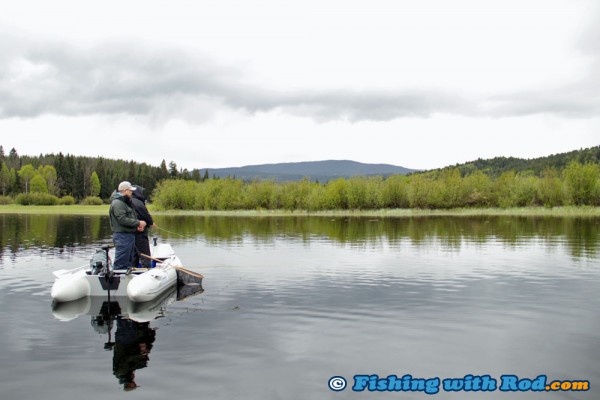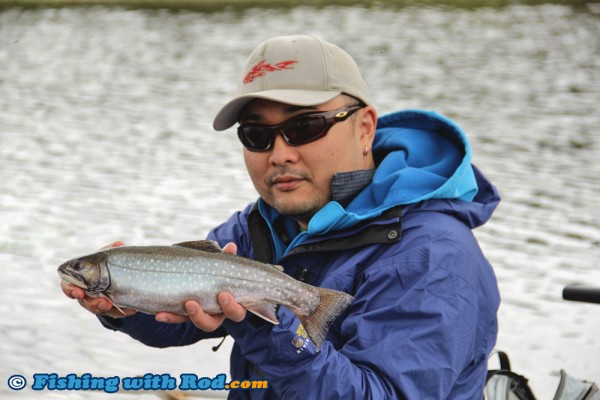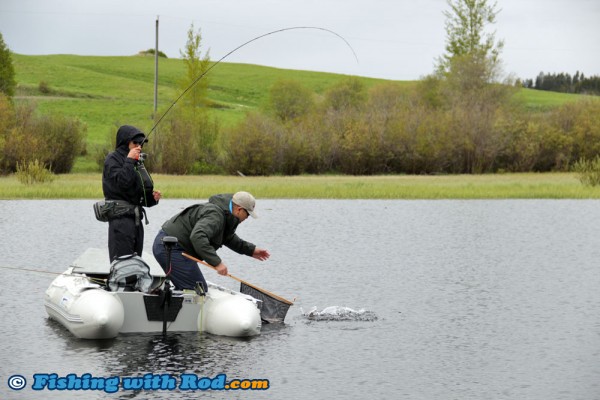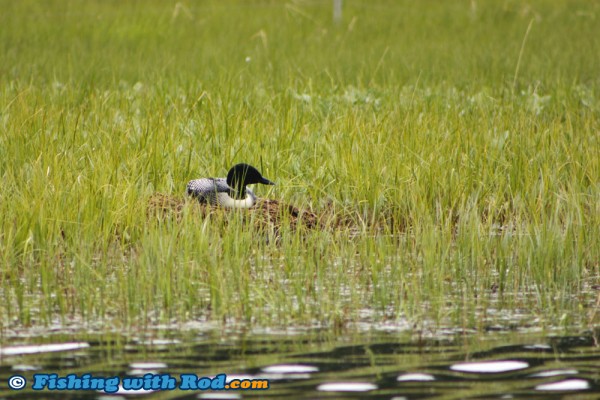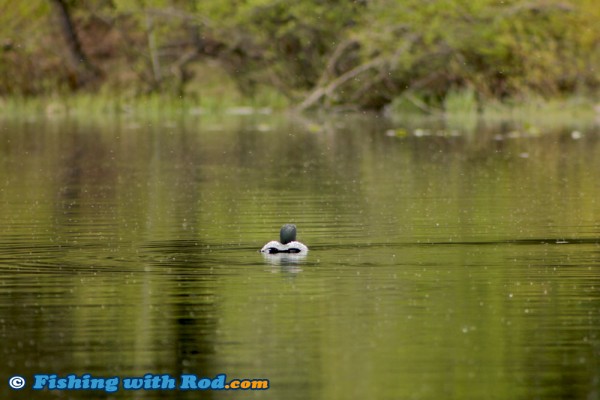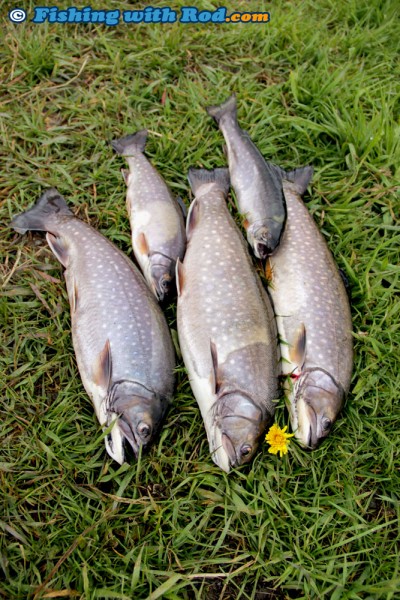First Timers for Brook Trout
Published on May 28th, 2013 by Rodney
Since I was introduced to them in 2007, brook trout, or Eastern brook char, have been a species I look forward to target every spring. They are not native in British Columbia, but are stocked in some lakes by the Freshwater Fisheries Society of BC. They are sterile, so cannot reproduce in the wild once released. Fish are released as yearlings, and due to the high productivity of lakes in Interior BC, these fish can reach up to 5lb after spending two years in the lake.
The weather has been unstable lately, but I have been itching to hit the spring lakes for awhile now. Due to family commitment, a multi-day trip is not doable, so I decided to pay a day visit to one of these brook trout lakes yesterday. I brought two friends along, Shane and Jason, who have never experienced brook trout before, so the pressure was on me to deliver.
The weather was surprisingly pleasant when we arrived at the lake at 9:30am. Flat calm surface, unlike the horrendous gust which we often face when fishing at lakes in the Thompson-Nicola region. This was a great start! As we made our way out, fish could be seen surfacing. All these signs suggested good fishing.
The fishing method employed was pretty standard for all stillwater fisheries in BC. We were fly fishing with an indicator. The flies used were chironomids in different colours and sizes, depending on what were hatching from the lake. The indicator depth was adjusted so that the fly would suspend a few feet above the lake bed, where fish tend to cruise.
We anchored both boats at a spot where I had success in the past. The background scenery was almost picture perfect. It is why we keep returning. We just needed some fish to complete the picture.
After 30 minutes, my strike indicator took a slow dive and I managed to hook it just in time after dropping the other rod. It was a reasonably large fish, most likely one that had spent two years in the lake. I decided to retain it, as brook trout are known to be fantastic table fare. Either grilled or steamed, we find them to be very tasty.
The second large fish, measured around 16 inches, came quickly after the first fish. This was followed by a number of smaller fish in the 1lb range. The hatch was very apparent, quite thick at some part of the lake. These fish should be feeding actively. Somehow the fishing was not as consistent as I had hoped.
Both Shane and Jason were not able to hook up in the first couple of hours. After some spot scouting, they were able to connect with fish. Brook trout can be soft biters. The indicator often just bobs or slowly submerges. Unlike rainbow trout, which always grab and run, brook trout usually eats and suspends at one spot. Once you recognize the bites, hooking them become much easier.
The day was definitely not uneventful. We were hammered by heavy rain at times, the loons kept the day interesting. One guarded her nest while I fished, while the other managed to swallow a fish I released. Bald eagles could be seen hunting and harassing other inhabitants.
Of course, the fish were the stars of the day. By the end of the six hour outing, we were able to boat around 20 fish, including several fine, large fish which measure between 3 and 4lb. This is why this province continues to be a paradise for anglers. There aren’t many other places where productive lakes can be accessed by the public without additional day fees or club memberships.

